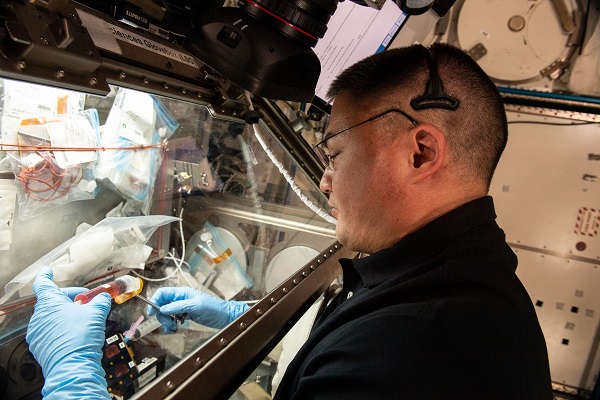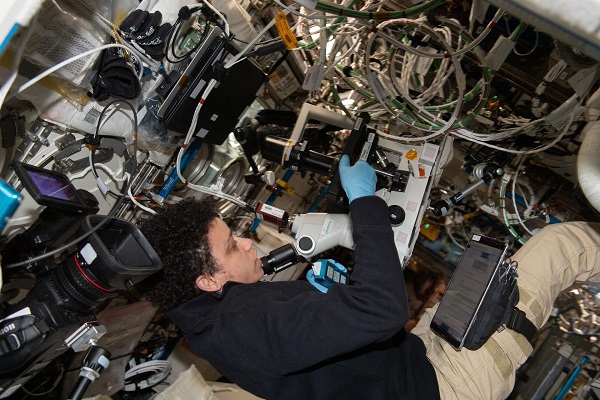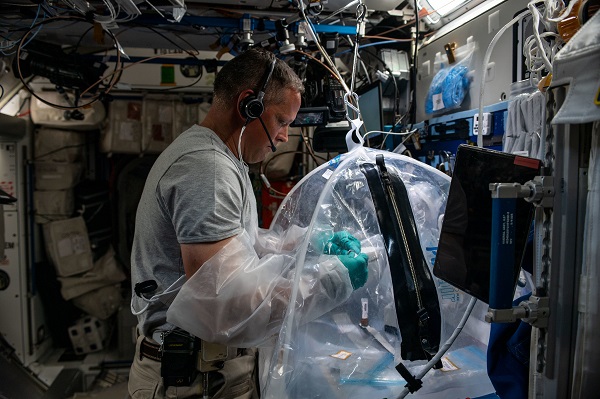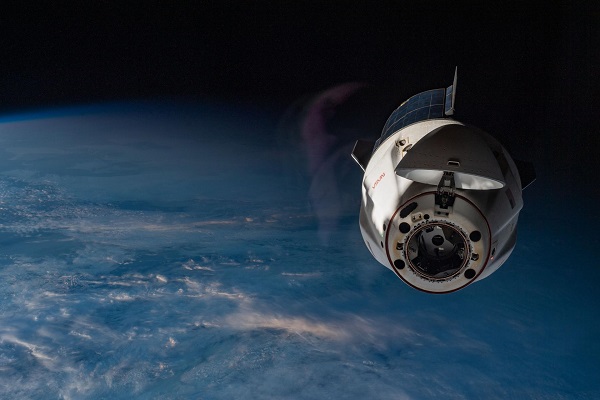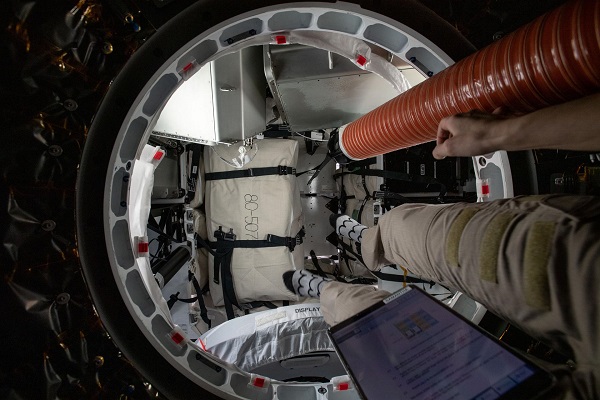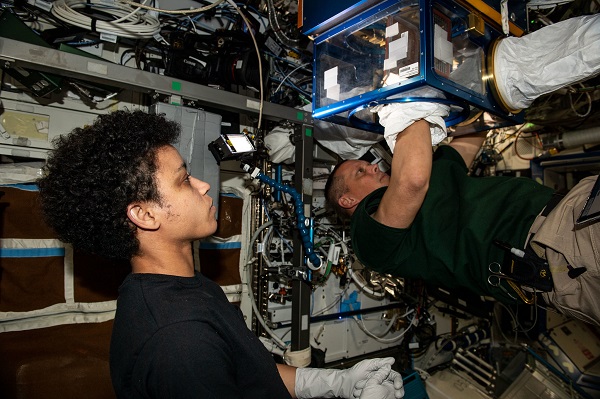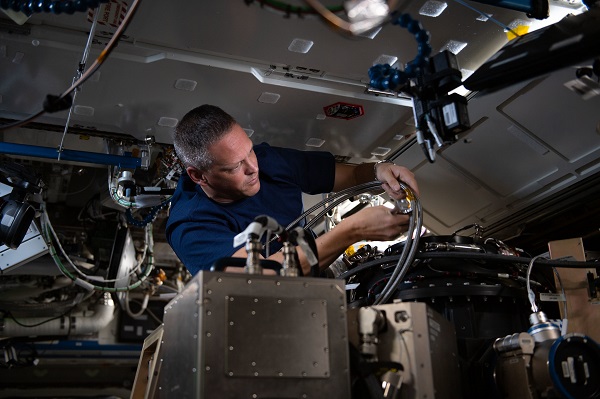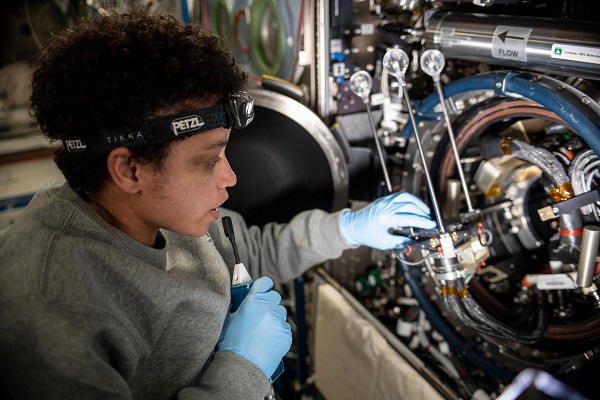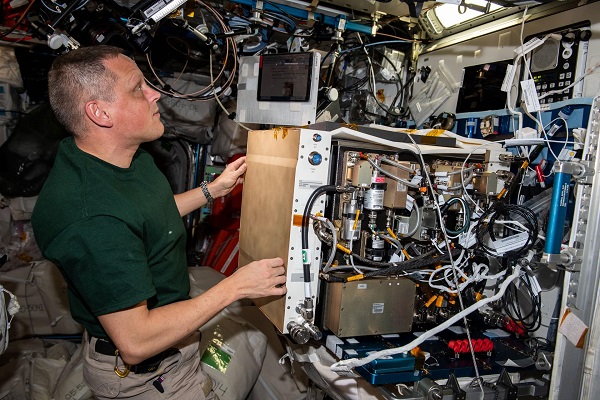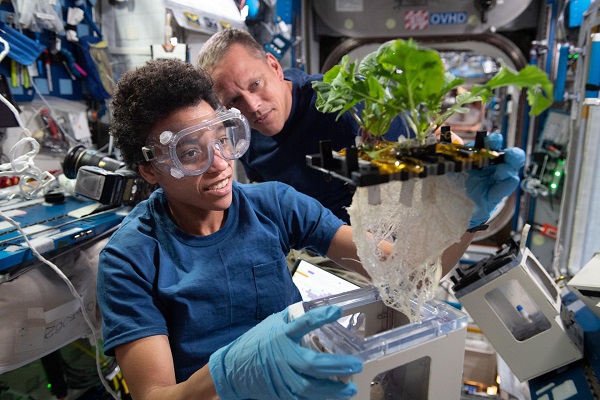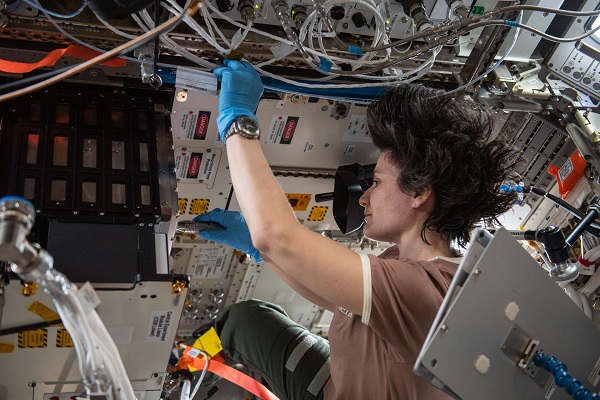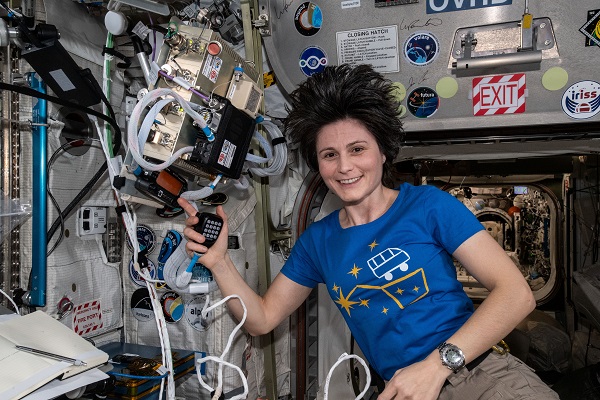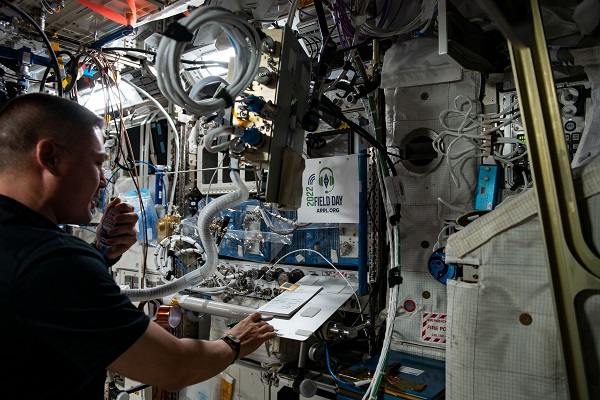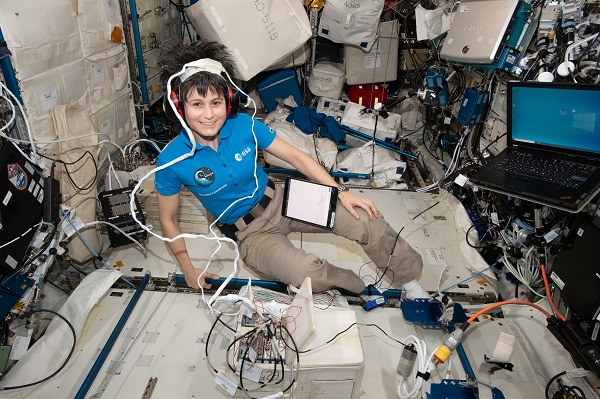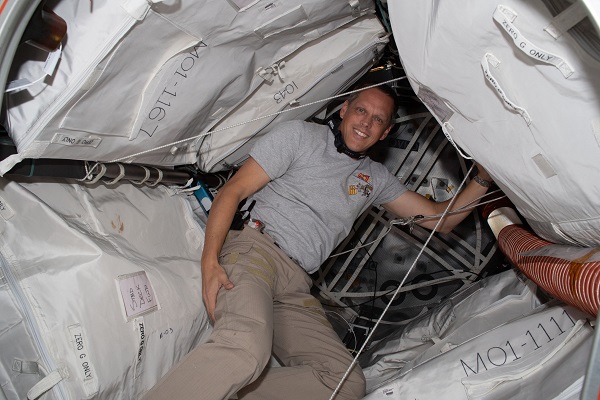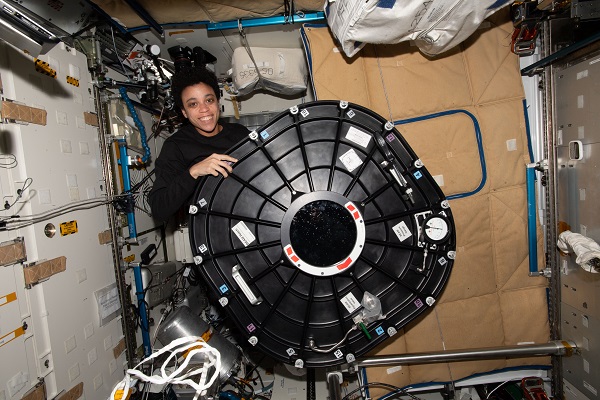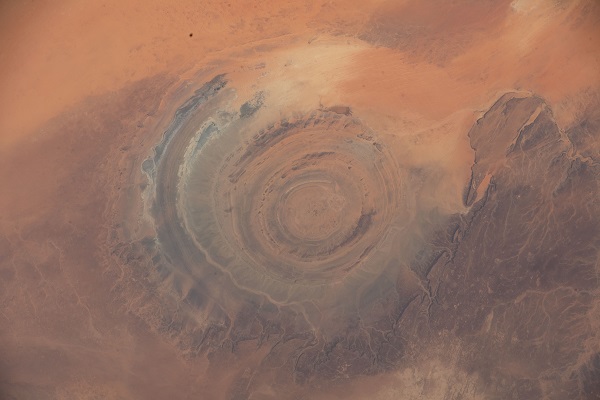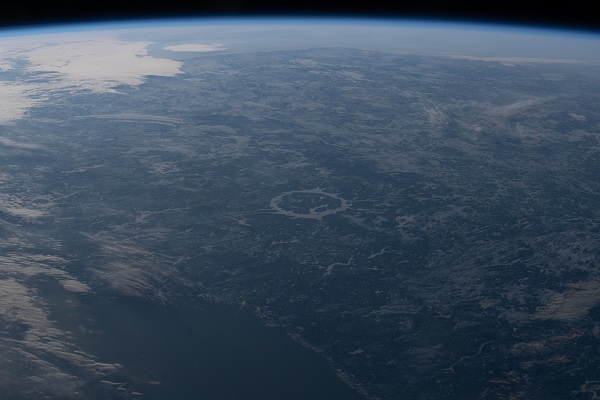After months aboard the International Space Station, the astronauts of NASA’s SpaceX Crew-4 mission are returning home. Traveling back to Earth inside a SpaceX Dragon capsule are NASA astronauts Kjell Lindgren, Robert “Bob” Hines, and Jessica Watkins along with ESA (European Space Agency) astronaut Samantha Cristoforetti.
During their time aboard the orbiting laboratory, these crew members contributed to ongoing and new scientific investigations and technology demonstrations, work that is helping to prepare humans for future space exploration missions and generating innovations and benefits for humanity on Earth.
Here is a look at some of the scientific milestones accomplished during the Crew-4 mission.
Download full-resolution versions of all photos in this article.
Aging in space
The Immunosenesence investigation examined microgravity-induced changes in human immune cells that resemble those associated with aging on Earth. In the top image, Lindgren processes samples for the investigation inside the Life Sciences Glovebox, and in the bottom image, Watkins sets up samples for viewing in the microscope.
A lab in orbit
Crew-4 worked on Food Physiology, an investigation that documents the effects of dietary improvements during spaceflight on immune function, the gut microbiome, and nutritional status indicators. Here, Hines processes samples in a Portable Glovebox (PGB), a facility that can be transported to any laboratory module on the space station and helps to prevent contamination when experiment containers are opened for observations, sampling, and fixations.
Arrivals and departures
Spacecraft regularly bring experiments, supplies, and crew members to the space station and return them to Earth. The top image shows the May 2022 departure of the SpaceX Dragon Endeavor to return the members of Crew-3 to Earth. In the middle image, Cristoforetti unloads cargo from SpaceX’s 25th commercial resupply services mission for NASA in August, and the bottom image shows Watkins (right) and Hines transporting scientific gear and samples from the Dragon capsule into the U.S. Destiny laboratory module.
Answering burning questions
The top image shows Hines replacing components inside the Combustion Integrated Rack (CIR), a research device that enables safe investigations into how flames, fuel, and soot behave in microgravity. In the bottom image, Watkins sets up the Solid Fuel Ignition and Extinction (SoFIE) hardware in the CIR to prepare for a new series of five experiments on solid material combustion and fire suppression. Crew-4 worked on SoFIE-GEL, which determines how fuel temperature affects the flammability of a material.
Little green plants in space
The space station hosts a variety of investigations into growing plants in space. In the top image, Hines works on the Plant Habitat, an automated system that supports such studies. The bottom image shows Watkins and Hines working on XROOTS, which used the station’s Veggie facility to test liquid- and air-based techniques to grow plants rather than traditional growth media. These techniques could enable production of crops on a larger scale for future space exploration.
Stable mixtures
Cristoforetti works on ESA’s FSL Soft Matter Dynamics – PASTA, a study of whether additives increase or decrease the stability of emulsions, which are mixtures of two liquids that typically do not blend. These phenomena can be better observed in microgravity, where the effects of buoyancy on emulsions are absent.
Water: a precious resource
Because water has some of the highest mass of all the supplies needed for space travel, effective recovery of potable water from wastewater is critical on long-term missions. Here, Lindgren works on Forward Osmosis Membrane, a microgravity test of a type of water-reclamation membrane that researchers expect to achieve better results while minimizing power consumption. This technology could provide more cost-effective water purification systems for communities with limited access to clean water on Earth.
Talk to an astronaut
In the top image, Cristoforetti talks to students in Italy, and in the bottom image, Lindgren participates in the Amateur Radio Relay League 2022 Field Day. Since Expedition 1, these International Space Station Ham Radio events have provided a direct link to space between more than 250,000 participants on the ground and over 100 crew members, helping to inspire interest in science, technology, engineering, and math. Astronauts also use the station’s amateur radio in their spare time. Listen to Lindgren talk with 8-year-old Isabella from the United Kingdom here.
Testing hearing in space
Cristoforetti participates in Acoustic Diagnostics, an ESA investigation that explores possible adverse effects on astronaut hearing from equipment noise and microgravity. The data could help researchers better understand the sound environment on the space station and support development of ways to protect crew hearing.
Expanding space(s)
Habitats for future missions to the Moon, Mars, and other destinations need to be lightweight and relatively simple to construct. The Bigelow Expandable Activity Module (BEAM) is an experimental expandable capsule tested aboard the space station. In the top image, Hines poses with cargo packed in BEAM; the bottom image shows Watkins with the module’s hatch.
The view from above
Crew members take photographs of Earth for CEO, recording how our planet changes over time through human-caused changes such as urban growth and natural events, including hurricanes and floods. These images support disaster response and a variety of research. The top image shows the Richat Structure, an eroded geological dome in the nation of Mauritania, Africa. At the center of the second image is the Manicouagan Crater in Quebec, Canada, taken from the space station as it passed 264 miles above the Atlantic Ocean off the coast of Newfoundland.
For daily updates, follow @ISS_Research, Space Station Research and Technology News or our Facebook. For opportunities to see the space station pass over your town, check out Spot the Station.
Melissa Gaskill
International Space Station Program Research Office
Johnson Space Center



























